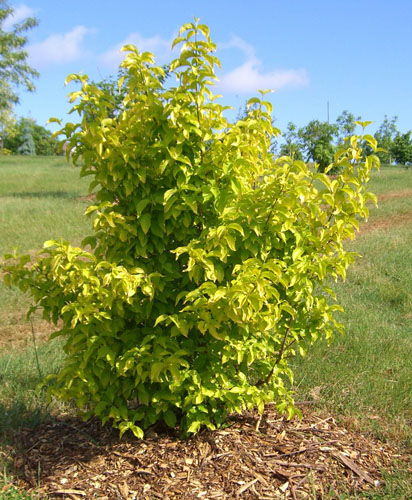

The genus includes 45-60 species, divided into subgenera about which taxonomists disagree. The dominant display, however, varies among the species.ĭogwoods are native to cooler temperate areas of North America and Asia. Members of the genus Cornus, commonly known as dogwoods, are welcome in the home garden for their multi-season interest - be it flowers, fruit, foliage, and/or bark - and their range of forms from small trees to suckering shrubs. The attractive grayish-brown bark exfoliates on mature branches. Flowers give way to tiny red berries that mature in the summer. It features tiny, star-like, yellow flowers that appear in March before the foliage and deep green, oval leaves turn to a purple tinge in autumn. The plant is a multi-stemmed, low-branching, round to oval, deciduous shrub or small tree that typically grows 15 – 20 feet tall. A particularly hardy plant, it is more vigorous than the species and thus suitable for the northern Midwest. Oregon State Univ.Golden Glory is a multi-stemmed upright form of Cornelian cherry that was introduced by the Synnesvedt Nursery Company of Illinois. Remarkably ornamental and adaptable, Cornus mas (Cornelian Cherry) is a deciduous shrub or small tree providing multiseason interest. officinalis reportedly has rusty patches of down in the axils of the veins.

mas also produces small cherry-red oblong drupes in the summer. Valued for its early spring show of yellow flowers, C. Additionally, the lower leaf surface of C. mas can be grown as a large multi-stemmed shrub or as a small oval-shaped tree. Insects, Diseases, and Other Problems: The plant has very few serious diseases or pests problems. mas, flowers earlier, has longer pedicels (twice as long as bracts), ripens fruit later, and its exfoliating bark may be more colorful. red olive-shaped fruits in mid-summer fall foliage is a mix of green and yellow with some reddish-purple color Seasons of Interest: Foliage: Fall Bloom: Summer, early Fruit: Summer-Fall, red berries Bark: Winter. When ripe on the plant, they bear a resemblance to coffee berries, and ripen in mid- to late summer. officinalis (Japanese Cornel Dogwood), which, in comparison to C. Cornus mas, commonly known as cornel (also the Cornelian cherry. Hardy to USDA Zone 4 Native to central and southern Europe and western Asia.Ī similar species is C. Prefers rich, well-drained soil, but adaptable to different soil types. Fruit an oblong drupe 1.6 cm long, bright cherry red, in mid-summer. The plant is drought and wind tolerant and can be used effectively. The plant has excellent resistance to dogwood anthracnose and. On mature trees, the bark is scaly and exfoliating. Red fruits develop and mature in the mid-summer. Its yellow flowers appear in early spring before the leaves emerge. Flowers open in early spring (too early?) before leaves appear, yellow, in short stalked umbels (20 mm in diam.) enclosed in 4 bracts before opening, each flower 1.5 mm in width. The flowers go on to form wonderful grape shaped fruits in late summer delicious when ripe. The cornelian cherry dogwood is a deciduous shrub or small tree that can grow up to 25 feet tall and 20 feet wide. Sometimes reddish fall color, but generally poor with leaves falling off green. Leaves opposite, simple, ovate to elliptic, 5-10 cm long, 3-5 pairs of veins, dark green above. Deciduous multistemed shrub or small tree, 20-25 ft ( 6-8m) high, spreading to 15 ft (4.5 m), oval-round outline, slender stems.


 0 kommentar(er)
0 kommentar(er)
